Kentropyx pelviceps
—
Forest Whiptail
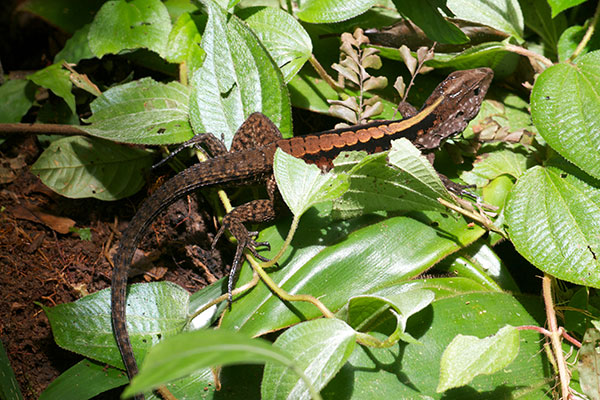
These whiptails were fairly easy to see in and around forest light gaps when the sun was shining, but for the most part they behaved like other whiptails and nervously twitched their way out of sight before a camera could be properly aimed. This large individual bucked the trend by basking in plain sight just off the trail, and actually holding a position for more than five seconds.
Here is a complete list of the herps I saw in the wild on my 2013 MT Amazon Expeditions trip.
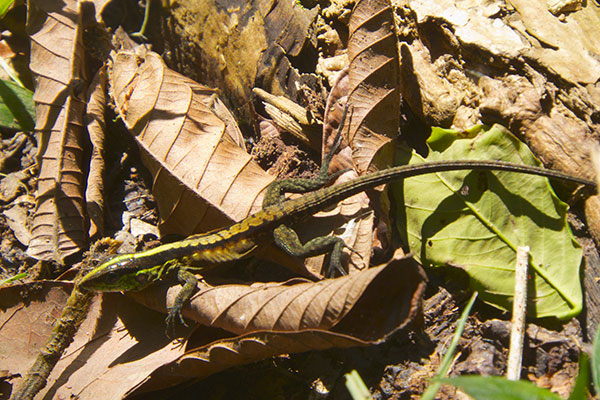
The vertebral stripe on younger individuals is usually lime-green on the head and shoulders, fading to tan and then brown further back.
Here is a complete list of the herps I saw in the wild on my 2014 MT Amazon Expeditions trip.
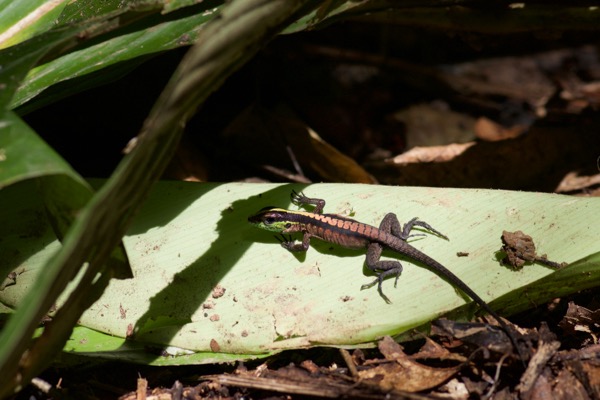
This one is very young and correspondingly brightly colored. It held this position for some time, which would have been nicer if its snout hadn't been in shadow. If I didn't have a foolish love of natural light, I could have gotten a much better photo by using my flash.
My Travelogues and Trip Lists page includes a complete list of the herps I saw in the wild on my 2016 MT Amazon Expeditions trip.
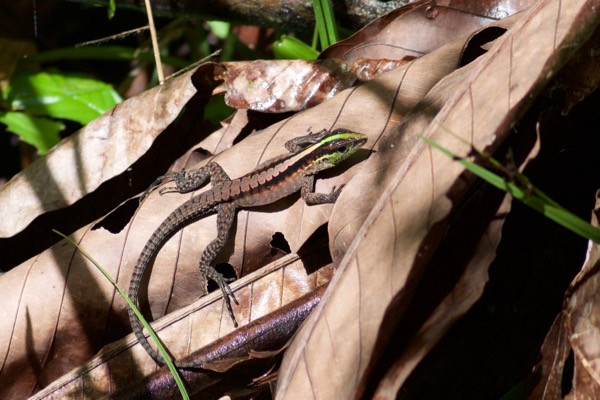
Another very young whiptail, similarly basking. From my pictures on this page, you might think that all these lizards do is relax in the sun. In fact, they are usually scuttling through the leaf litter, but it's very hard to get a decent photograph while they're doing that.
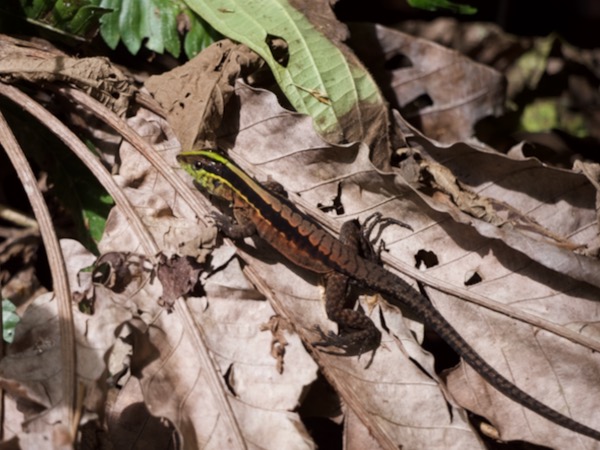
Not too many of these whiptails around this year. I saw a few that scurried off, but this is the only one I managed to photograph.
Printed references:
- Bartlett, R.D., and Bartlett, P. 2003. Reptiles and Amphibians of the Amazon: An Ecotourist's Guide
- Dixon, J. R. and Soini, P. 1986. The Reptiles of the Upper Amazon Basin, Iquitos Region, Peru
- Duellman, W.E. 2005. Cusco Amazónico: The Lives of Amphibians and Reptiles in an Amazonian Rainforest